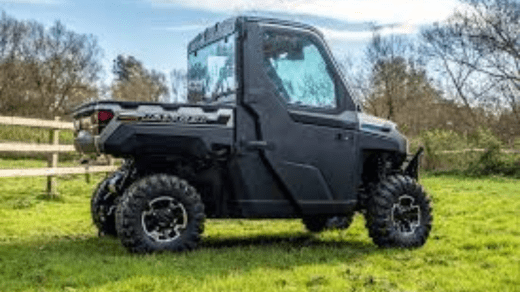Making your Polaris Ranger quieter can significantly enhance your riding experience, reduce noise pollution, and make conversations more manageable while driving. Here are some steps you can take to reduce the noise levels in your Polaris Ranger:
1. Insulate the Cabin:
- One of the most effective ways to reduce noise is to add sound insulation to the cabin. Consider applying automotive sound-deadening materials to the interior surfaces, such as the floor, roof, and walls. These materials can help absorb and block noise from the engine and surrounding environment.
2. Install a Quieter Exhaust System:
- Upgrading to a quieter exhaust system or adding a muffler with noise-reducing properties can make a noticeable difference in the overall noise level of your Polaris Ranger.
3. Use Noise-Reducing Accessories:
- Invest in noise-reducing accessories like acoustic panels or noise-dampening mats designed specifically for off-road vehicles. These can be placed in key areas to help absorb and reduce noise.
4. Check for Loose Components:
- Inspect your Polaris Ranger for loose or rattling components that could be contributing to noise. Tighten any loose bolts, brackets, or other parts to reduce vibrations and rattles.
5. Maintain the Vehicle:
- Regular maintenance can help reduce noise caused by worn or damaged parts. Check for loose or damaged panels, bodywork, or accessories, and repair or replace them as needed.
6. Adjust the Suspension:
- Properly tuned suspension can help reduce vibrations and the transfer of noise into the cabin. Adjust the suspension settings to achieve a smoother ride.
7. Choose Quieter Tires:
- Tires with aggressive tread patterns can produce more noise. Consider selecting tires designed for on-road or trail use, as they tend to be quieter than mud-terrain tires.
8. Drive at Lower Speeds:
- Driving at lower speeds can reduce the overall noise level, especially when driving on rough terrain. Slow down when possible to enjoy a quieter ride.
9. Use Noise-Reducing Helmets and Ear Protection:
- If you’re still experiencing high noise levels, consider using helmets and ear protection designed to reduce noise while riding. These can help protect your ears from prolonged exposure to loud sounds.
10. Address Wind Noise: – Wind noise can also be a source of cabin noise. Ensure that doors, windows, and other openings are properly sealed to reduce wind noise.
11. Professional Assessment: – If noise remains a significant issue despite your efforts, consider consulting with a Polaris dealer or a professional mechanic for a comprehensive assessment. They may be able to identify specific sources of noise and recommend appropriate solutions.
It’s essential to balance noise reduction with safety and functionality, as some noise in an off-road vehicle can be important for awareness and safety. Implementing these steps can help you achieve a quieter and more enjoyable ride in your Polaris Ranger while preserving its performance and functionality.

